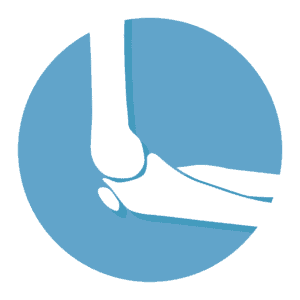
What is Mini-Incision Total Knee Replacement?
Mini-Incision Total Knee Replacement is a procedure used to replace the knee joint. This is accomplished with the use of metal and polyethylene plastic parts to replace damaged areas. This procedure is performed using smaller incisions than those traditionally used for total knee replacement surgery. By using smaller incisions, blood loss, pain, and recovery time may be reduced.
Who needs Mini-Incision Total Knee Replacement?
This procedure may be beneficial for those who have severe knee damage. Potential causes of this damage may include arthritis or injury to the knee. Your doctor may recommend this procedure if you have severe pain that is not responsive to other treatments.
What are the steps in Mini-Incision Total Knee Replacement?
Reshaping the Femur
Your surgeon will remove the damaged areas of the femur bone and any damaged cartilage. The area at the top of the femur is then reshaped in order to fit a metal femoral component in its place.
Attaching the Femur Component
Your surgeon then will use bone cement to attach the metal component to the end of the femur.
Reshaping the Tibia
Like the femur, the damaged areas of the tibia and cartilage are removed and reshaped for a metal tibial component.
Inserting the Tibia Component
Once the tibia is reshaped, your surgeon will use bone cement to attach the metal tibia component to the end of tibia.
Attaching the Polyethylene Insert
One the metal components have been inserted, your surgeon will insert a polyethylene component and attach it to the metal tibial component. This is done so that the body's weight is supported. The femur is now able to glide over the tibia component.
Joining the Components
The tibial and femoral components are now joined together to form the new knee joint.
Attaching the Patella Component
The rear surface of the patella, or knee cap, is now prepared to ensure that it glides smoothly over the new knee joint. This preparation consists of cementing a polyethylene component on the back of the knee cap.
End of Procedure
Once all incisions have been closed, your doctor will test the new knee joint by flexing and extending the joint.
After Surgery
After the procedure, you're likely to experience a reduction in knee pain. However, activity modification is necessary to ensure your artificial knee lasts for some time. Talk with your doctor about the kinds of activities you can and cannot do after surgery to ensure the best results.








